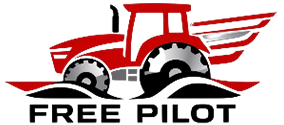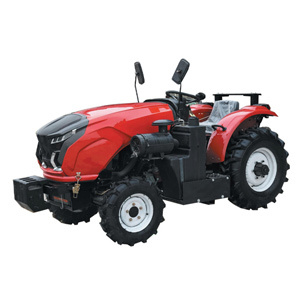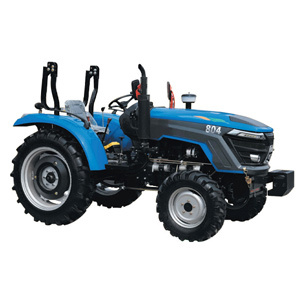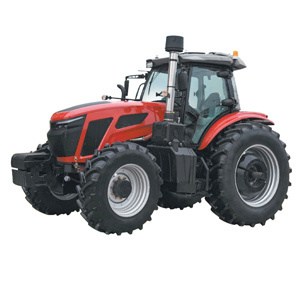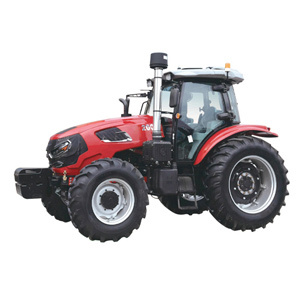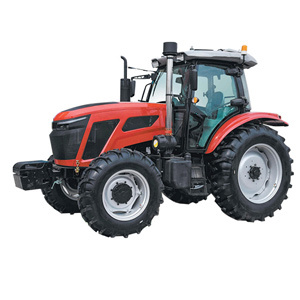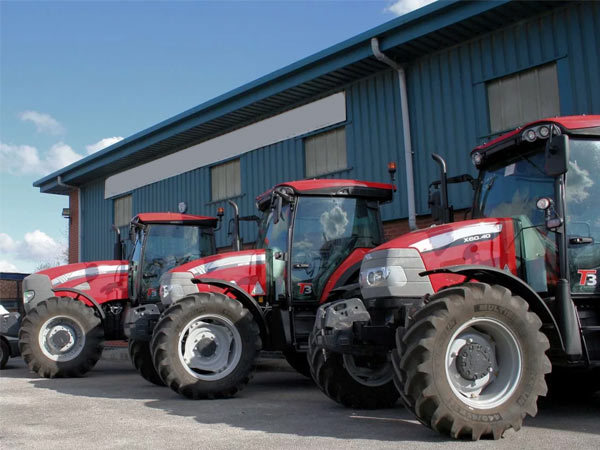Providing you with a one-stop solution for tractors
More Tractor Horsepower Isn't Always Better! Expert Advice on Precision Matching to Your Farming Needs
Release time:
2025-11-03
In the world of agriculture, the allure of "more horsepower" is powerful. It's often equated with greater capability, prestige, and future-proofing. However, this common mindset can be a costly mistake. As agricultural specialists, we assert that selecting a tractor is not about maximizing horsepower, but about precision matching the machine to your specific agronomic requirements. The right horsepower, aligned with your actual needs, is the true key to efficiency, profitability, and sustainability.
The High Cost of Oversizing: Why Bigger Can Be Worse
Choosing a tractor with more power than you need leads to a cascade of negative consequences that directly impact your bottom line.
Excessive Capital Outlay: The purchase price of a tractor increases significantly with its horsepower. You are paying a premium for power you will rarely, if ever, use.
Chronic Fuel Waste: A large engine operating under light loads is inherently inefficient. It consumes far more fuel per hour than a appropriately-sized engine working in its optimal power band. This is a constant, burning drain on your finances.
Increased Soil Compaction: Larger tractors are heavier. Their immense weight, especially when combined with improper tire pressure, contributes to severe soil compaction. This damages soil structure, restricts root growth, reduces water infiltration, and ultimately harms your yields—the very thing you're trying to improve.
Higher Operational Costs: Everything is more expensive: larger tires, more engine oil, costlier filters, and potentially higher insurance premiums.
The Expert's Framework: Precision Matching Based on Agronomy
Forget horsepower for a moment. The correct selection process starts with a deep analysis of your farm's profile. Ask these critical questions:
What is Your Primary Tillage Depth and Soil Type?
Deep Tillage in Heavy Clay: Requires high horsepower and high traction.
Shallow Tillage in Sandy Loam: Can be accomplished efficiently with significantly less power.
What is Your Implement Mix and Their Power Demand?
PTO-Dependent Tasks (Balers, Sprayers): The critical metric is PTO Horsepower. Match this to the requirement of your most demanding PTO implement.
Draft-Dependent Tasks (Ploughs, Disc Harrows): The focus shifts to traction and torque. A heavier, well-ballasted tractor with adequate (not excessive) horsepower is key.
Hydraulic-Demanding Tasks (Loaders, Seeders): Requires a robust hydraulic system (flow and pressure). A large engine with a weak hydraulic system is a mismatch.
What is Your Farm's Topography and Field Size?
Large, Open Fields: Can efficiently utilize a higher-horsepower tractor.
Small, Contoured Fields or Orchards: A compact, maneuverable tractor with lower horsepower is far more practical and efficient.
The Smarter Approach: The "Power-to-Weight" and "Efficiency" Paradigm
Instead of chasing the highest horsepower, focus on these more intelligent metrics:
Optimal Power-to-Weight Ratio: A tractor that has enough weight to provide excellent traction for its power level, without being excessively heavy, is ideal. It means the power is being used for work, not just to move the machine itself.
Advanced Transmission Technology: A modern transmission like a Continuously Variable Transmission (CVT) or a powershift can do more work with the same horsepower than a basic gearbox by keeping the engine in its most efficient RPM range.
Integrated Hydraulic Efficiency: Look for a system that provides high hydraulic flow for implement speed without needing a massive engine to drive it.
Case Study: The Right Power for the Right Job
A 100 HP Tractor might be the perfect, efficient match for a mixed farm running a 5-furrow plough in loam soil and a medium-sized baler.
A 150 HP Tractor would be oversized for this role, leading to the "oversizing costs" mentioned above. It would only be justifiable for deeper tillage, wider implements, or heavier soils.
A 75 HP Tractor would be underpowered, struggling with the plough and potentially damaging the engine over time.
Conclusion: Partner with Precision
The most powerful tractor is not the one with the biggest number on the hood; it's the one that is perfectly synchronized with your land, your implements, and your agronomic practices. By shifting your focus from raw horsepower to a holistic analysis of your operational needs, you make a smarter investment.
Consult with our agronomic specialists today. We don't just sell tractors; we analyze your soil, your implements, and your workflow to provide a data-driven tractor recommendation that maximizes your return on investment and protects the health of your soil for seasons to come.
RELATED BLOG
